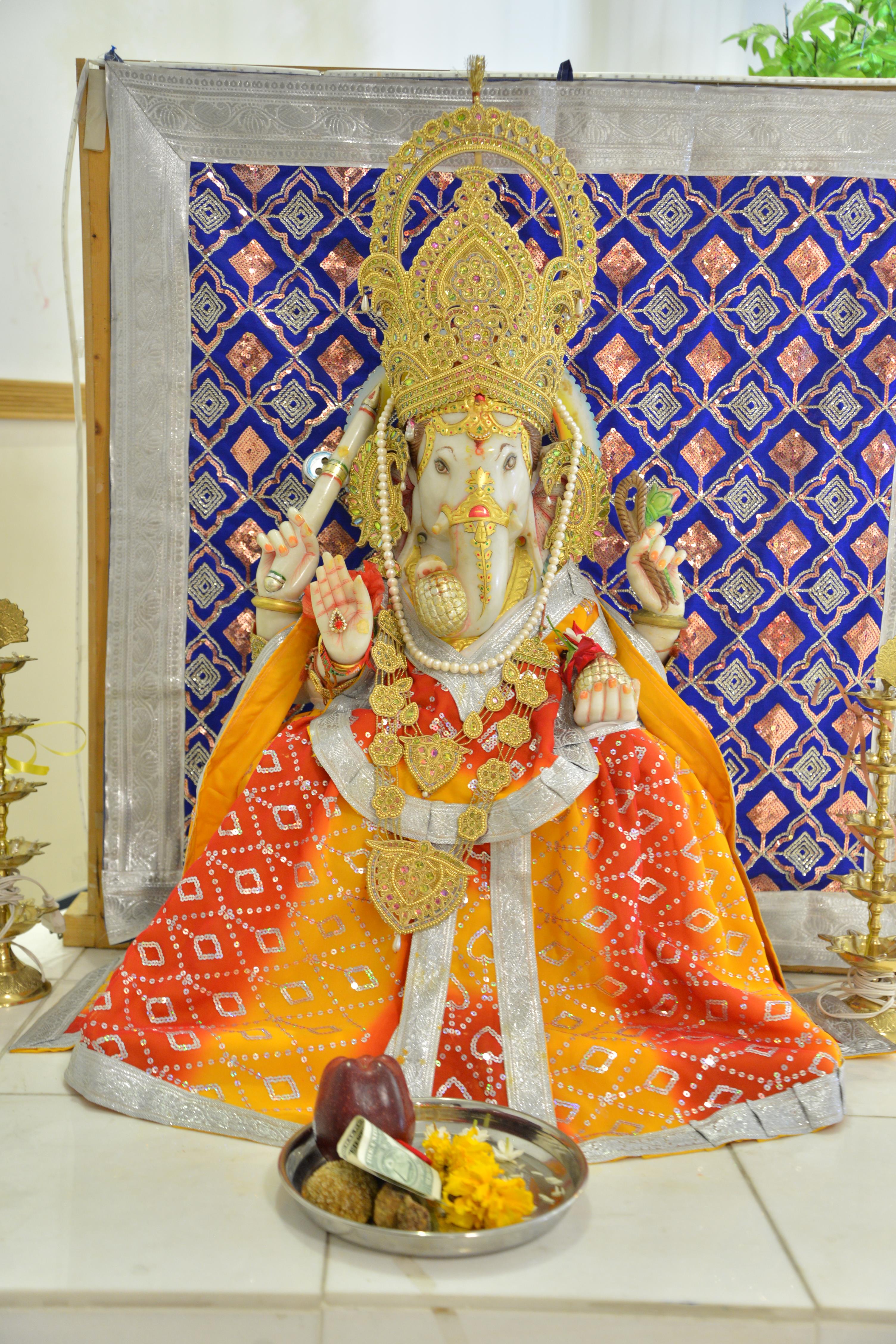Ganesha is the son of Shiva and Parvati. Gajanana is the one who has the elephant face. He is represented by the head of an elephant with one broken tusk, and a human body. There are number of legends accounting for his elephant head. Vinayaka means “supreme leader”. The meanings of Vighneshwara and Vighnahara mean the master of obstacles and the remover of obstacles respectively. It is a firm belief among Hindus that Ganesa alone can remove every obstacle in the way of success. Therefore by tradition and spiritual authority, Ganesa’s Grace has to be evoked before starting any project. At the beginning of every action, ceremony and endeavor, Ganesa is worshipped and prayers are offered to Him for the success of what is being started.
He is said to have written down the Mahabharata dictated by Sage Vyasa. He is the lord of Ganas, attendant spirits(Ganapati). He is portrayed as a pot-bellied, short, stout person, with four hands. He holds his favorite sweet, Modak, in one of his hands. In the other hand, we holds a shell, in the third a discuss, and in the fourth a water Lilly. His vehicle is a mouse (Musika).
On the fourth day of the month of Bhadra, a worship service(Puja) is celebrated annually to mark the birth of Ganesha. It is a widely observed festival. Clay images of Ganesha are installed at homes and community centers and worshipped with great fervor. (It is considered unlucky to look at the moon on this night.) After five or seven or ten days, the images are taken in procession and immersed (Visarjana) in a body of water (River, Sea etc.)
Devotees believe that Ganesa despite having a big belly and huge body is subtle in intellect. He rides on a mouse. One may think, how is it possible. The answer is: Ganesa’s body may be big but his subtle mind makes the body very light so that a mouse can carry Him. The famous prayer for Ganesa is as follows:
Gajananam Bhoota ganadi sevitam, Kapiththa jamboo phal saara bhakshitam
Umasutam Sokavinasa karanam, Namami vighneswara pada pankajam.
Meaning: I bow at the lotus feet of Vighneshwara who has the face of an elephant, who is worshipped by all beings and ganas; who enjoys the essence of fruits like kapiththa and jamboo; who is the son of Uma(Parvati), and who destroys sorrow.

